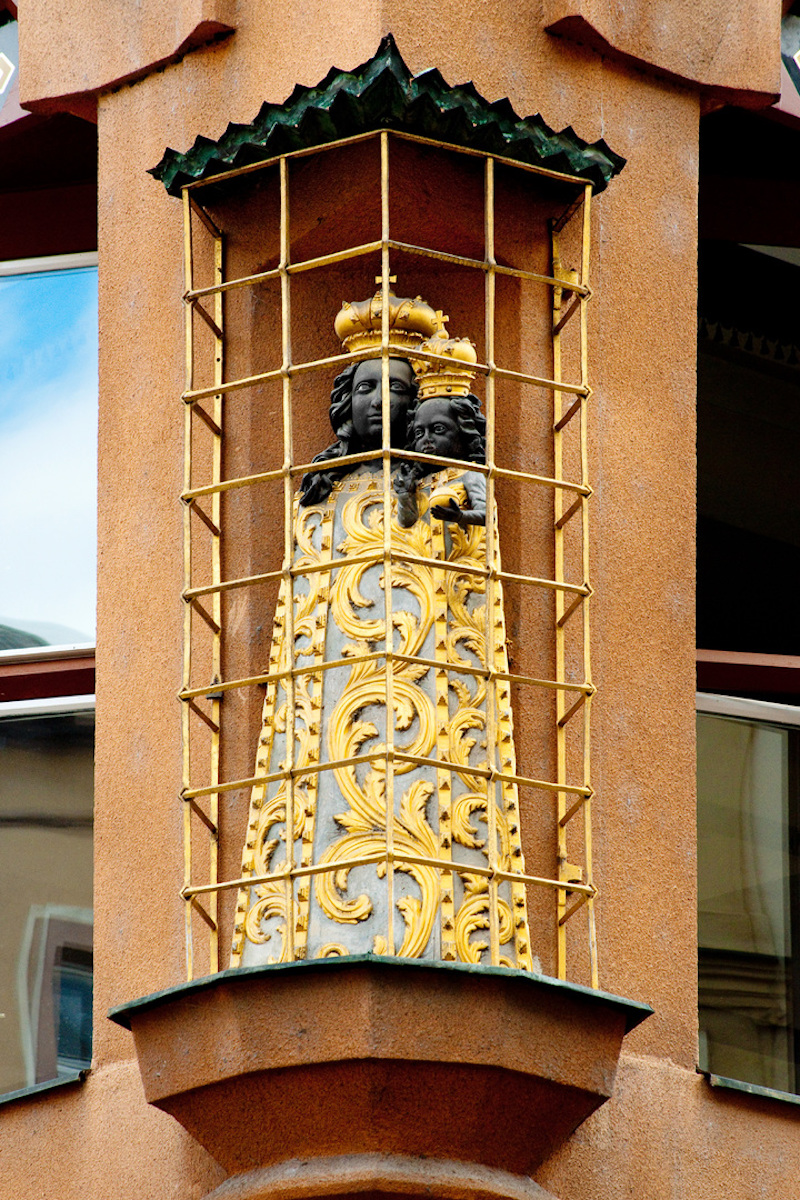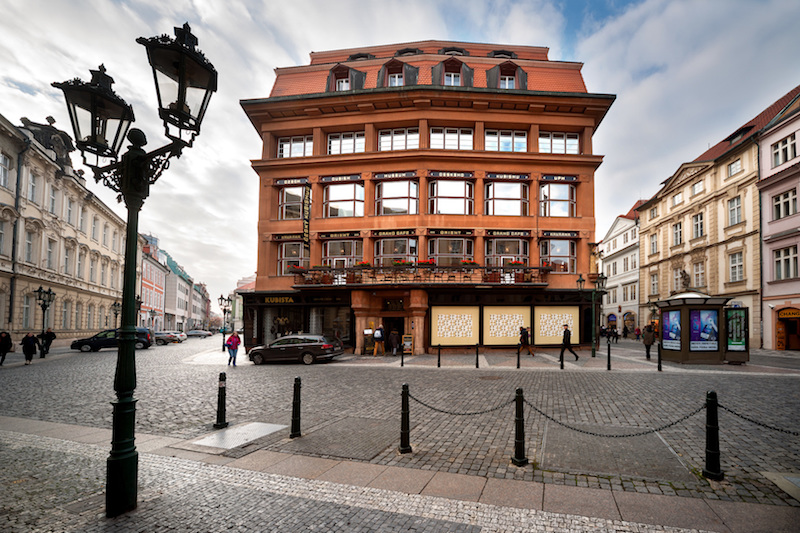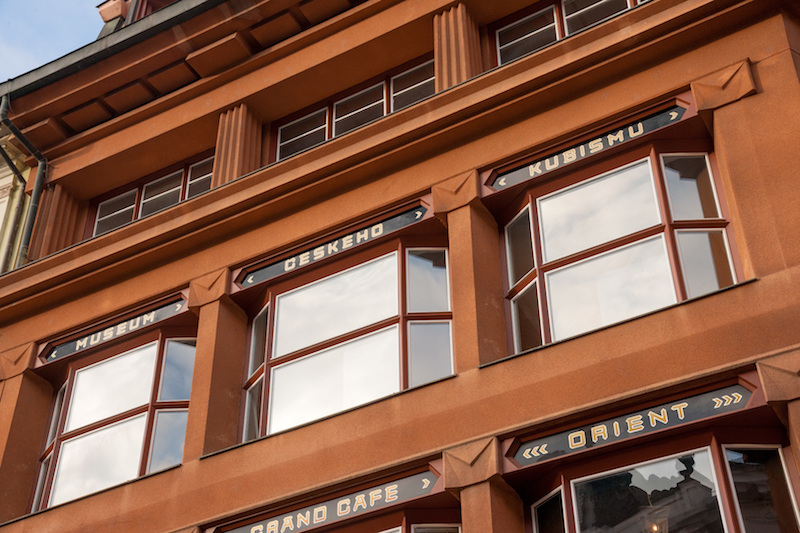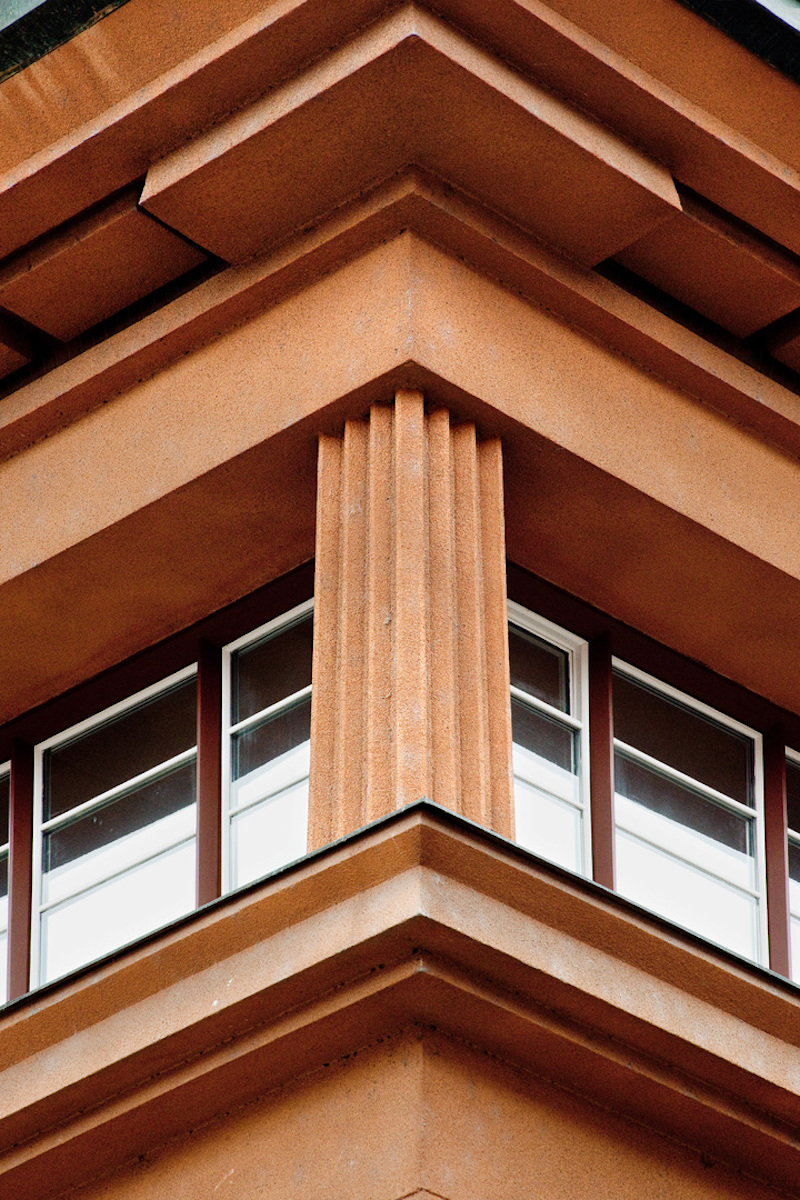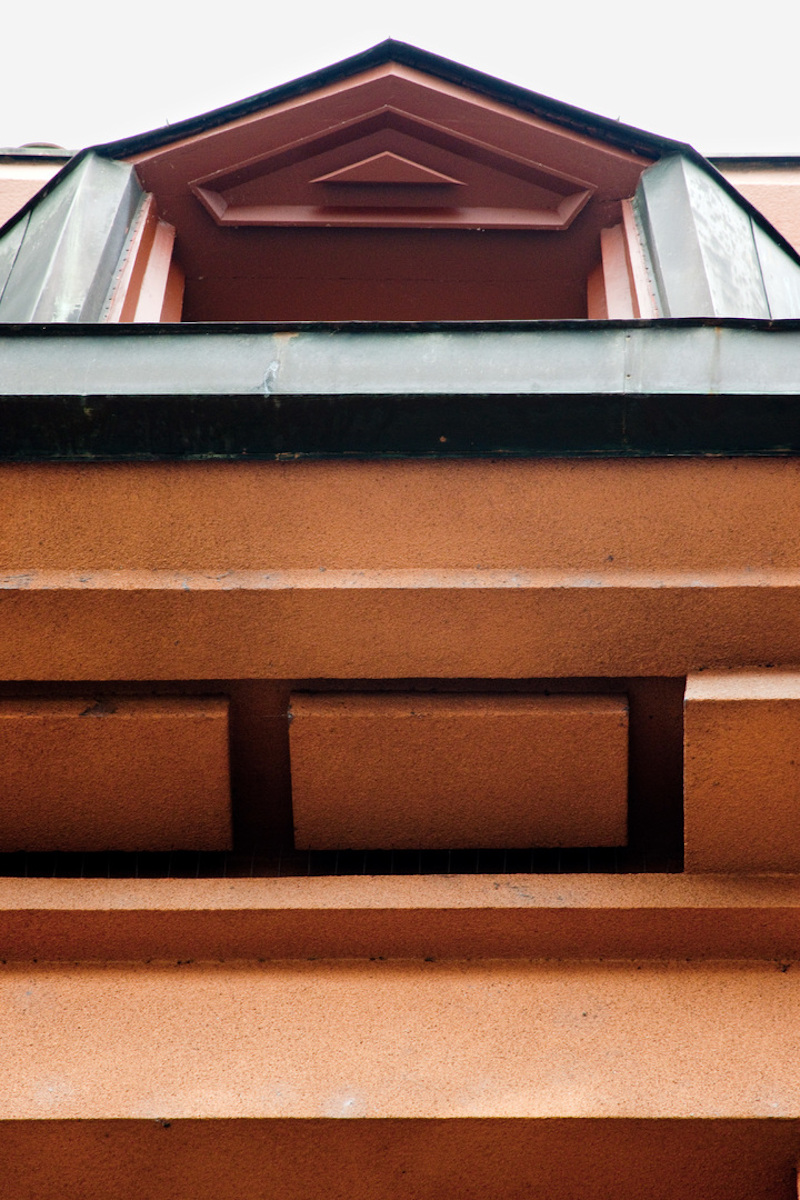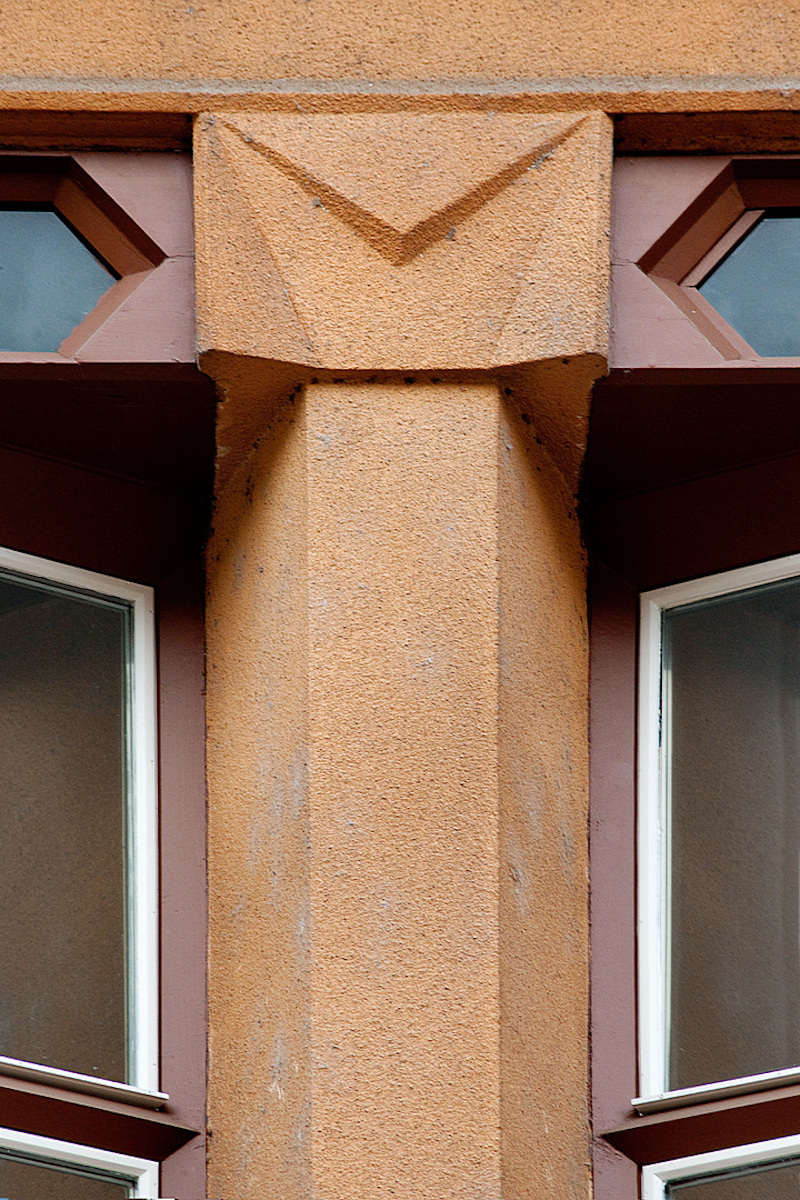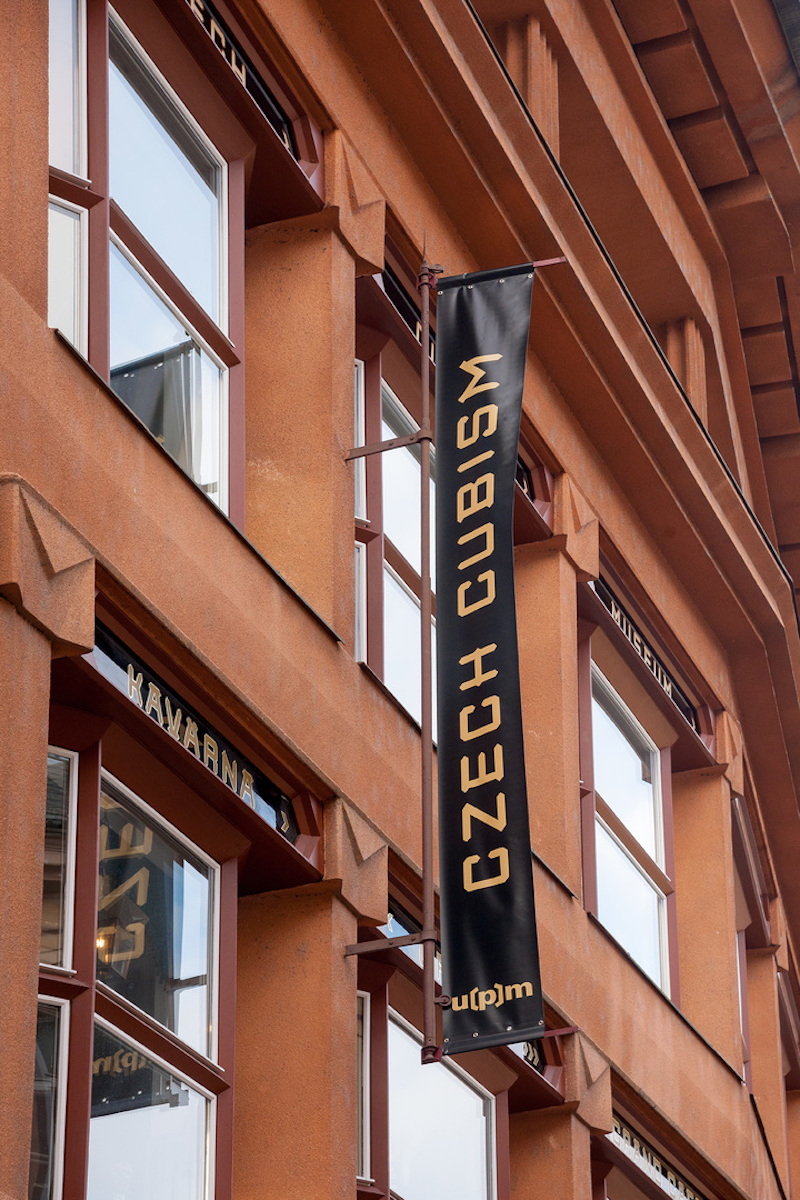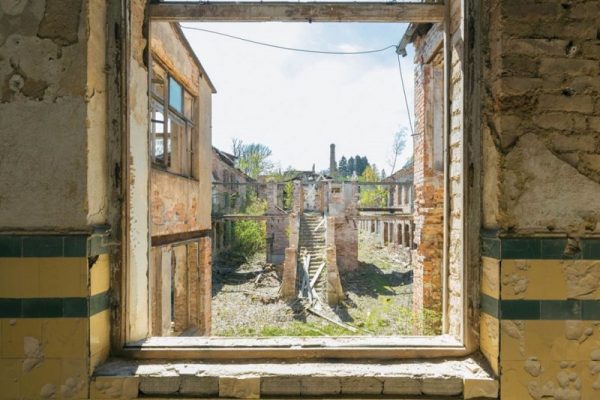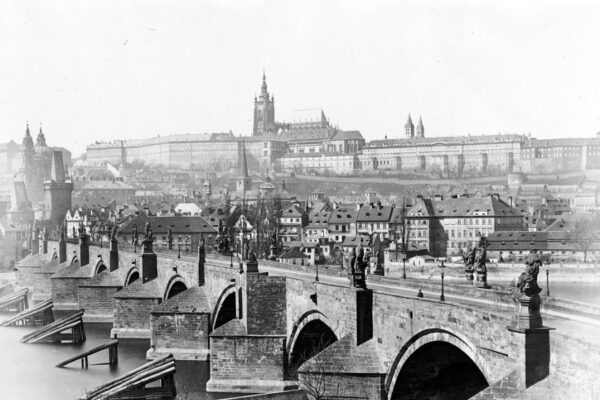In 1911, the Czech architect Josef Gočár designed a building for the wholesale merchant František Josef Herbst. The building, which is now known as the House of the Black Madonna (Czech: Dům U Černé Matky Boží), is the oldest cubist house in the city of Prague. The building is named after the baroque statue which adorns the right corner of the building. The stone sculpture of the Black Madonna, which dates back to the 17th century, was formerly attached to the baroque building which stood in the place of the House of the Black Madonna.
The cubist gem is located in the Old Town section of Prague between Celetná Street and Ovocný trh. It was the first example of cubist architecture in Prague and is still celebrated today for its excellent design. Somehow, the House of the Black Madonna manages to fit in with the historic baroque buildings which surround it, maintaining the style and atmosphere of the Old Town. This is perhaps proof of its timelessness.
The prominent location of the building, however, proved to be a challenge for Gočár when he was designing the building. His first plans for the building were not received well by the historical buildings authorities in Bohemia. The design of the building was subject to strict rules due to it being located in within the heart of the city in the historic Old Town. The building was not to clash with its historical setting. This is why the building evokes baroque architecture but in a cubist form.
Gočár’s subsequent designs featured more cubist aspects, such as capitals between windows and a cubist balcony rail, and were finally approved by The Prague City Council on August 4, 1911. Gočár, who was selected by František Josef Herbst to design the building, was chosen due to his previous success designing a similar shop located in Jaroměř.
In building the House of the Black Madonna, Gočár made use of a reinforced-concrete skeleton. This allowed the building to feature larger interior spaces without ceiling support. In fact, the entire first floor lacked supporting pillars. This was in line with cubist aesthetics and, at the time, was a revolutionary feat of engineering.
Gočár, who is widely regarded as one of the founders of modern architecture in Czechoslovakia, designed the structure when he was just thirty-one years old.
After its construction, the ground and second floor of The House of the Black Madonna served as a department store, the first floor housed the Grand Café Orient, and the remaining floors served as apartments. In the 1920s, both the department store on the second floor and the Café on the first floor were converted into bank offices. The department store was finally closed in 1922. In the following years, the use of the building changed frequently due to the war and to the subsequent communist rule. The building underwent reconstruction from 1993 to 1994, when it finally became a center for Czech art and culture. But it was closed again in the beginning of 2002 for renovation. After undergoing restoration, it re-opened in the fall of 2003.
Today, the building houses the Czech Museum of Cubism and the first floor is home to The Grand Café Orient, which we wrote about in our series on the bourgeois cafés of Prague. If you are interested in learning more and exploring photographs of The Grand Café Orient, head over to this post.
In addition to the building, Gočár also designed the interior of the café, including the oak bar counter, the built-in furniture, and the wrought-iron chandeliers. Today, The Grand Café Orient is the only surviving cubist interior in the world. This is somewhat ironic since Gočár was described by some as only being concerned with creating cubist façades.
Two floors of the building are now dedicated to a permanent exhibition of cubist art which is curated by the Czech Museum of Fine Arts. This permanent exhibition focuses on cubist art by Czech artists in the period from 1911 to 1919. This period marks the heyday of cubism in both the visual arts and in architecture.
The house of the Black Madonna is a masterpiece of Czech cubist architecture and has been recognized as a National Cultural Monument since July 1, 2010.
If you have not already subscribed to get TresBohemes.com delivered to your inbox, please use the form below now so you never miss another post.
Remember, we rely solely on your donations to keep the project going.
Become a friend and get our lovely Czech postcard pack.

